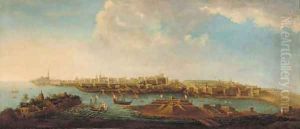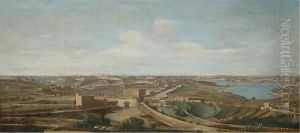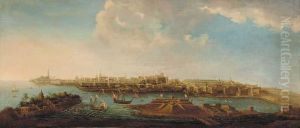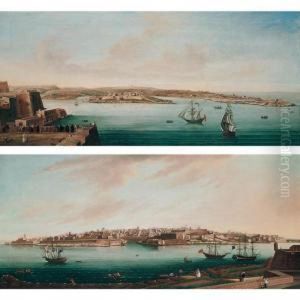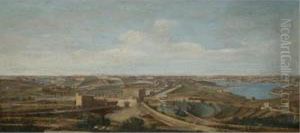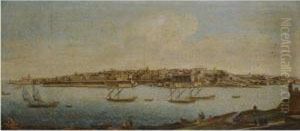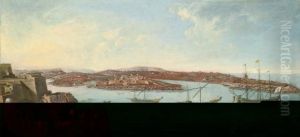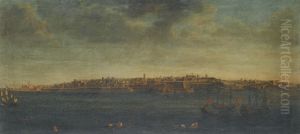To Alberto Pullicino Paintings
Alberto Pullicino was an 18th-century Maltese painter known for his skill in perspective and architectural paintings. Born in 1759 in Valletta, Malta, he became one of the most prominent Maltese artists of his time. His work captures the essence of the Baroque period and reflects the rich cultural heritage of Malta during that era.
Pullicino’s training and early influences are not well-documented, but it is believed that he was initially taught by his father, Giuseppe Pullicino, who was also a painter. He later enhanced his technique and style by studying under other Maltese artists, which allowed him to develop his unique approach to painting. Pullicino's work often depicted architectural subjects, and he became renowned for his ability to render intricate details with great accuracy.
Throughout his career, Alberto Pullicino received numerous commissions from the church and from private patrons. His religious works and his detailed vistas of Valletta and its grand harbor helped to document the appearance of the city during his lifetime. His paintings served not only as works of art but also as historical records, providing insights into the urban landscape of Malta in the 18th century.
Pullicino's contributions to Maltese art were significant. He was a contemporary of other notable Maltese artists such as Francesco Zahra, and his style was characteristic of the local interpretation of European artistic movements. Pullicino passed away in 1837, but his legacy lives on through his paintings which continue to be appreciated for their historical value and artistic merit. Today, his works can be found in various churches and museums, including the National Museum of Fine Arts in Valletta.
